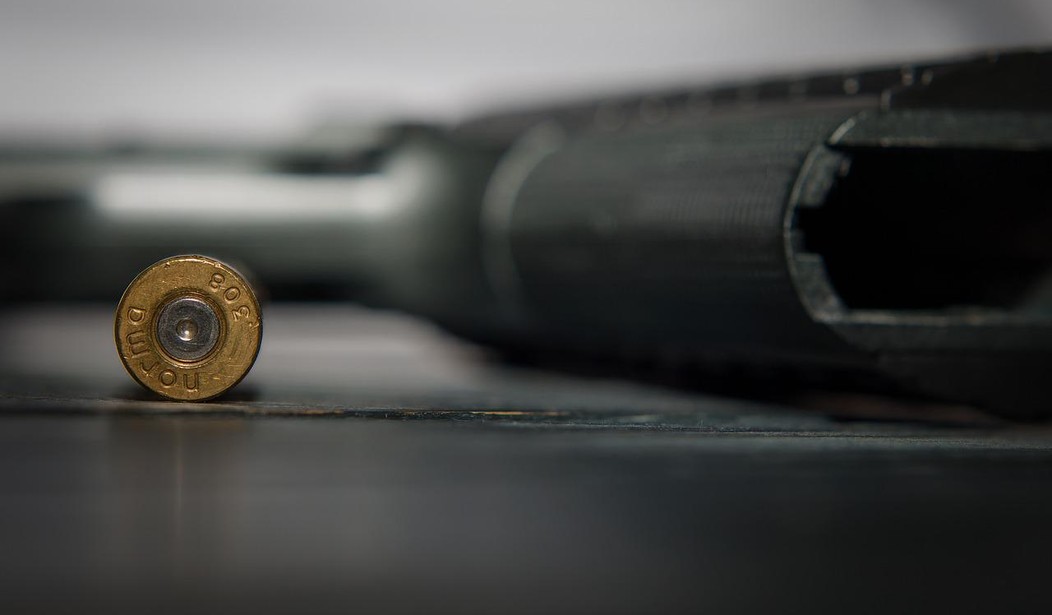It’s been six years since gun control activists convinced the state legislature of the need to enshrine Extreme Risk Protection Orders into law, but in many parts of the state the “red flag” laws allowing for the confiscation of firearms from those deemed by a judge to be a danger to themselves or others has been used infrequently or not at all.
That’s a problem for the gun control lobby and anti-gun politicians, who have relaxed the rules regarding who can file a petition and are now spending millions of dollars in an attempt to raise awareness of the law and increase the number of Californians who are subjected to it. In fact, LA Magazine has deemed the law to be a “failure”, though the outlet has high praise for San Diego, which is home to the vast majority of “red flag” orders issued over the past six years.
Ever since California’s Gun Violence Restraining Order (GVRO)—one of the first “Red Flag” laws across the U.S. that make it easier for authorities to remove firearms from those believed to pose a threat—was introduced in 2016, San Diego City Attorney Mara Elliot and her eight-member team have filed over 1,250 successful GRVOs. This should make San Diego stand out as a model for other agencies across the state, but, as CalMatters reports, many of them have only recently begun restructuring their programs to take advantage of the GVRO option.
According to San Diego Deputy City Attorney Jeff Brooker, that’s the problem. Brooker tells Voice of San Diego that Red Flag laws represent a “paradigm shift” with agencies across the state looking ahead rather than remaining solely reactive.
San Diego’s GVRO team, led by Brooker, has filed restraining orders that led to the seizure of firearms from 865 people—placing them comfortably ahead of any other agency in the state—about a third of which are eventually returned. Brooker’s group have become the go-to resource for agencies looking to better their programs. Brooker, who has received more than 100 calls since January, said, “I get calls all the time where [police] tell me we just prevented a shooting.”
I have questions. First, given that the confiscation of firearms is supposed to be temporary, why have only about 1/3rd of the guns seized been returned to their rightful owner? Under California law, the initial seizure of firearms can last for up to five years, but prosecutors can re-file any petition before it expires, which means that gun owners can be stripped of their right to keep and bear arms for an indefinite amount of time even without being convicted or even charged of a crime or being adjudicated as mentally ill through a commitment.
LA Mag deems San Diego’s efforts to be a success simply because the Extreme Risk Protection Order law is being used so frequently, but the entire purpose of the law is to reduce crime. Is that happening? As it turns out, not so much.
Violent crime in San Diego County increased in 2021, a report released Tuesday by the San Diego Association of Governments found.
The annual report, “42 Years of Crime in the San Diego Region: 1980 through 2021,” found homicide, rape and aggravated assault increased 3%, 11% and 12% respectively in 2021.
… For homicide cases where a motive could be determined, 32% were related to an argument and 18% were gang-related. Aggravated assaults with a firearm increased by 18%. Violent crime against senior citizens increased by 10% and reported domestic violence increased by 3%. Arsons saw an 18% decrease.
“I think what we saw in 2020 was just really something that I hadn’t seen since I’ve been doing this again we go back to 1980, historically we’re still at 42 year lows roughly, but we saw big jumps one of the biggest one year jumps that I’ve seen back from 2020 to 2021 both in violent crimes and property crimes,” said Burke.
If these “red flag” orders are really so successful, then why is San Diego seeing more murders and shootings? The reality is that there’s simply no way to show that California’s “red flag” laws are having the positive effect that supporters claim they are, because how can you prove that someone who had their guns taken was actually going to commit a crime or take their own life? The entire premise behind Extreme Risk Protection Orders is that it’s better to take the guns rather than risk a crime being carried out, even if that means that individuals who pose no real risk to themselves or others end up disarmed as well.
California’s ERPO law suffers from the same issues as those on the books in 18 other states, from the fact that guns can be taken without the subject of the petition having a chance to offer evidence of their own or even being a part of an initial hearing. Because these ERPOs are considered civil matters, the subject of the petition is also ineligible to receive help from a public defender, even though its typically the county’s District Attorney who’ll be arguing in favor of taking guns away during the court hearing. And while mental health counseling can be part of the order, there’s no mandate for it, and once again the burden for finding and paying for counseling is entirely on the subject of the petition, even though they’re supposedly a danger to either themselves or others.
The best way to deal with truly dangerous individuals isn’t to take their guns away and leave them to their own devices, but to get the criminal justice and mental health systems involved. Unfortunately, this is California we’re talking about, and many of the state’s soft-on-crime prosecutors may be inclined to use ERPOs rather than pursue criminal charges that could lead to incarceration. Meanwhile, the state’s mental health system is in the midst of a full-blown crisis, with the RAND Corporation detailing in a study last year that the state doesn’t have nearly enough of the inpatient beds it needs.
Rather than try to fix that failing system, which was supposed to be a model for the rest of the country through a tax on millionaires that’s resulted in billions of dollars in spending, California’s anti-gun lawmakers are far more interested in expanding the use of “red flag” laws and trying to convince the public that they’re an effective and useful tool for public safety instead of what they really are: a relatively cheap and constitutionally suspect way for those politicians to claim they’re doing something at the expense of our due process and Second Amendment rights.









Join the conversation as a VIP Member